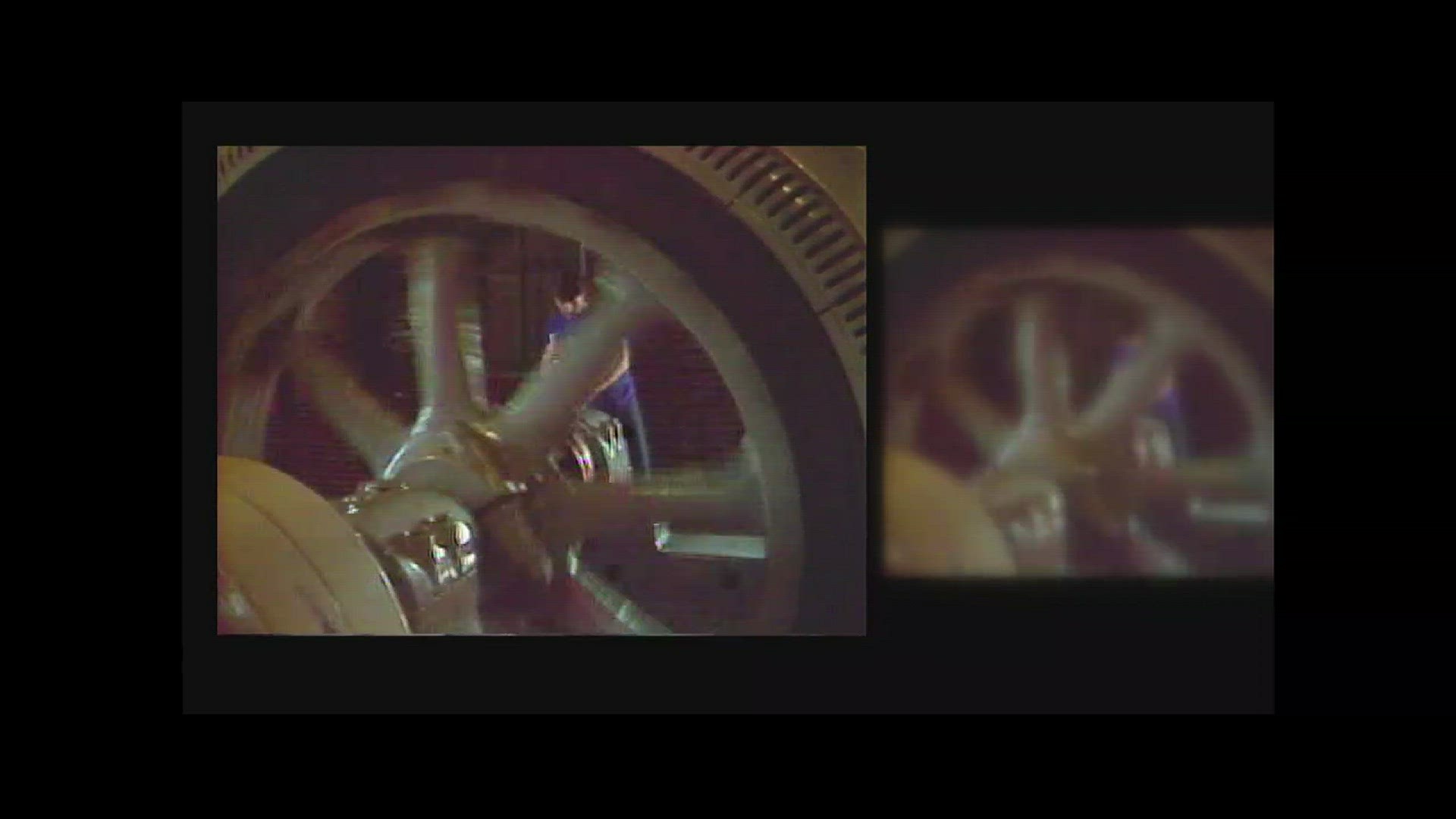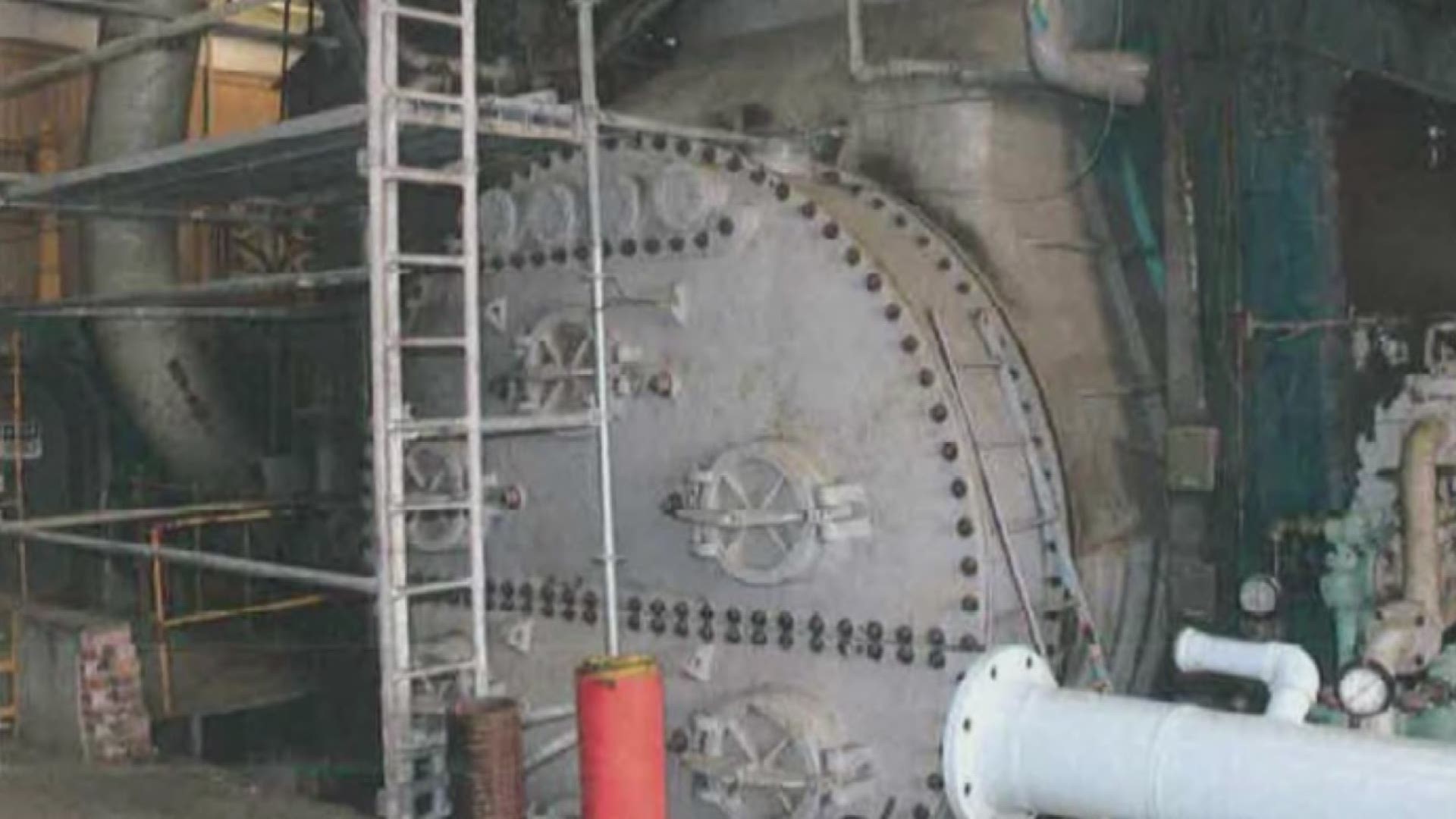Down the Drain is a WWL-TV investigative project that explores what went wrong and where the blame lies for New Orleans' drainage crisis. Down the Drain was reported and produced by WWL-TV's investigative team: Katie Moore, David Hammer, Mike Perlstein, TJ Pipitone and Danny Monteverde. Infographics and multimedia design by Sam Winstrom and Kevin Dupuy.
NEW ORLEANS -- This summer’s surprise flooding in New Orleans shined a new light on the Sewerage & Water Board’s overmatched, outdated power plant.
Century-old turbines and generators went down, the agency didn’t trust the local electric utility’s power supply and drainage pump station operators couldn't get the power they needed to push water out of some of the city’s lowest-lying areas.
“You have the oldest power generation plant in America,” Mayor Mitch Landrieu said at a Sewerage & Water Board meeting in September. “There is no one that's older. It's tired, it's old.”
What’s received less attention since the flooding is the Sewerage & Water Board’s repeated failure to use large amounts of federal aid to address power problems that have been obvious for more than a decade.
What happened to the federal aid?
The Sewerage and Water Board got $152 million in Hazard Mitigation grants from FEMA in 2012 to refurbish and upgrade the power generation equipment at its Carrollton Power Plant. FEMA says that the so-called HMGP Power Plant Retrofit project now costs $185 million and most of the difference will have to be covered by local taxpayers.
And yet, during the course of nearly six years, the S&WB has only managed to spend $50 million -- a third of the federal money that’s just sitting in Washington, waiting to be drawn down.
Turbine No. 4
A large portion of the retrofit project has been delayed by a single, damaged turbine called Turbine No. 4.
Built in the 1920s, the unit was severely damaged when the S&WB used dirty Hurricane Katrina floodwater and not potable water to create the steam that churns the turbine. The agency learned it may be irreparable at a meeting in 2013, but continued to hold off on refurbishing its three other ancient turbines until it could complete the Turbine 4 work.
Turbine 4 still doesn’t work and won’t be back online until April 2018 at the earliest, officials say.
Meanwhile, turbine failures in March, July, August and September have hurt the Sewerage & Water Board more than ever because the agency stopped using the electricity it purchases from Entergy as its primary power source.
Records show the Sewerage & Water Board has spent nearly four times as much over the last 10 years to make its own power than to buy it from Entergy's grid. Experts have suggested repeatedly that Entergy should be the primary source of power for the S&WB, and the in-house generators should be backups. But over the years, the city and S&WB lost faith in Entergy’s ability to deliver uninterrupted electricity to the Carrollton Power Plant using the same overhead distribution lines that send electricity to homes and small businesses.
The Entergy Substation
In 2012, and again after a power failure in 2015, experts implored the S&WB to build a dedicated substation at the power plant, so Entergy would be able to deliver industrial-grade electricity over more reliable underground transmission lines.
But Entergy and the S&WB bickered over price and who should pay for the substation project. As WWL-TV first reported Nov. 1, Landrieu claimed the substation would cost $100 million even while records showed Entergy quoting $14 million.
The mayor also seems to overstate the cost of buying new turbines with the FEMA money.
“If you have to build a new power plant, it's the equivalent, for the most part of building a new Superdome,” he said at the Sept. 21 S&WB meeting.
The Superdome cost $165 million when it was built in 1971. That's the equivalent of about $1 billion today. Landrieu said he wasn’t citing exact figures, but also suggested a new power plant for the drainage system would cost about the same as a new airport. The city is currently building a new airport for about $1 billion.
But public records reviewed by WWL-TV make it clear the cost would be much cheaper and well within the reach of an agency still flush with federal funds.
For example, Entergy has proposed to build a power plant to produce five times as much power as the Sewerage & Water Board is currently trying to address. Entergy says that will cost $230 million – not even a quarter of Landrieu’s estimate for a plant that’s far larger than anything the S&WB would ever need.
More specifically, the Army Corps of Engineers already bought and installed a turbine and generator for the Sewerage & Water Board, fully installed with its own building on the Carrollton Power Plant campus, at a total cost of $31 million. That more efficient, gas-fired turbine can generate a quarter of the power once produced by the S&WB.
So, conceivably, the S&WB could have bought and installed three more of those new turbines, each with its own building, for $93 million, and still would have had more than $90 million of the $185 million left for other upgrades. Even with the $50 million it’s already spent, the Sewerage & Water Board could stop its costly and so-far unsuccessful work, buy the three new turbines, and still have more than $40 million left over.
And the S&WB had even cheaper and easier opportunities along the way. In 2013, just as the S&WB was beginning to spend the FEMA money, agency emails show that international manufacturer Siemens sent specifications for mobile turbine generators that it had available in Europe, ready for delivery at a discount.
Sources familiar with the proposal said Siemens quoted the S&WB a price of $27 million for four turbines of 12.9 megawatts each.
But S&WB leaders passed on the deal and stuck with their original plan of refurbishing the existing units. More than four years later, the Turbine 4 refurbishments alone have cost $26 million, and the work is still not done. Another $40 million of the FEMA money is dedicated to refurbishing Turbines 3 and 5, work that has not yet begun.
To watch the full Down the Drain special click here.



